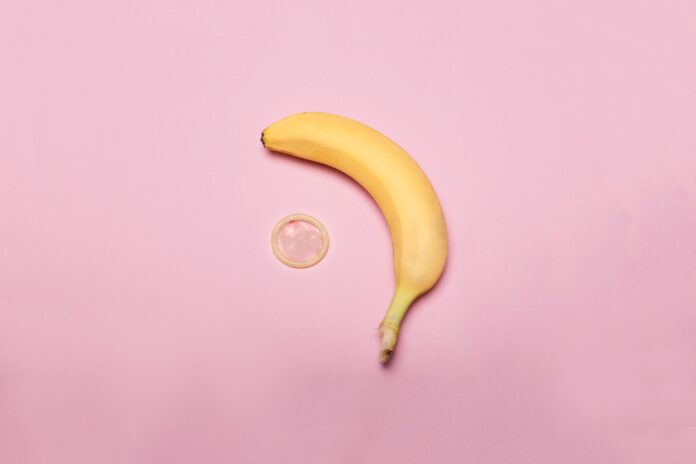Thoughts that trigger “What the hell?” or its unprintable first cousin “WTF?!” usually come to the mind of the uninitiated when dydoe piercing is heard or read.
Some questions like these follow: Why exactly do people choose to pierce their most sensitive and private parts? How painful is the process? Does it increase s3xual stimulation? Is s3x even possible with a dydoe piercing?
This guide to dydoe piercings will look at some of them and a lot more. But we won’t engage in overly explicit or s3xually charged conversations. We understand this may be a point of interest (who wouldn’t want to know how someone with a dydoe piercing makes love or enjoys s3x). Let’s, however, start with a point that interests us.
Who the hell (or which MF) named ‘head of the penis piercing’ Dydoe? Before a Yoruba person will say “Dydoe ko, di do ni”, let’s tell you the origin of the name.
Etymologically, the word dydoe comes from the expression ‘doodad’, which means a decorative embellishment. Curiosity kills the cat. This time, though, curiosity takes you nowhere. Actually, it confounds because if you click ‘doodad’, a page called ‘Placeholder name’ opens.
Placeholder names are generic and ambiguous terms referring to things, places, or people who do not exist, are temporarily forgotten, or are unimportant. Like doodad, like some Nigerian political placeholders!
READ ALSO: Snake Eyes Piercing (2023)
What is Dydoe Piercing?

A dydoe piercing is a male genital piercing located at the head of the penis. Sometimes, it’s called a corona piercing or the more direct name “head of the penis piercing”. You do the piercing through the coronal ridge, which is the raised area around the cap of the penis.
A dydoe piercing typically uses a curved barbell, but there are other jewellery options available. We shall talk about that later. Dydoe piercings are usually done with a needle, and it takes about 6-8 weeks to heal. The healing process can be painful, but it is usually not as painful as other genital piercings.
We expect the piercing to be done in an environment with proper sterilisation procedures. It is important to choose a reputable piercer who is familiar with the dydoe piercing and can answer any questions you may have. You should follow aftercare instructions to avoid infection and to ensure proper healing.
Regarding risks, dydoe piercings have a relatively low risk of infection when done properly. However, there is a risk of rejection. Here, the body rejects the piercing and pushes it out. This is more likely to happen with curved barbell jewellery. So, a straight barbell may be a better choice.
There is also a risk of tearing during s3xual activity, which can cause bleeding and scarring. Proper aftercare and following your piercer’s instructions can help minimise these risks. It is also important to avoid s3xual activity until the piercing is completely healed.
Origin of Dydoe Piercing
It’s not well documented, but it may have originated in the body modification community in the 1980s or 1990s. The dydoe piercing was one of the first genital piercings, not done for religious or cultural reasons. Of course, how can any religious body pen penis head piercing in its constitution?
Dydoe piercing was rather self-expression and was done by people who were interested in alternative lifestyles. The dydoe piercing was popularised by Fakir Musafar, a performance artist and body modification pioneer, who is the “father of modern primitive body piercing”.
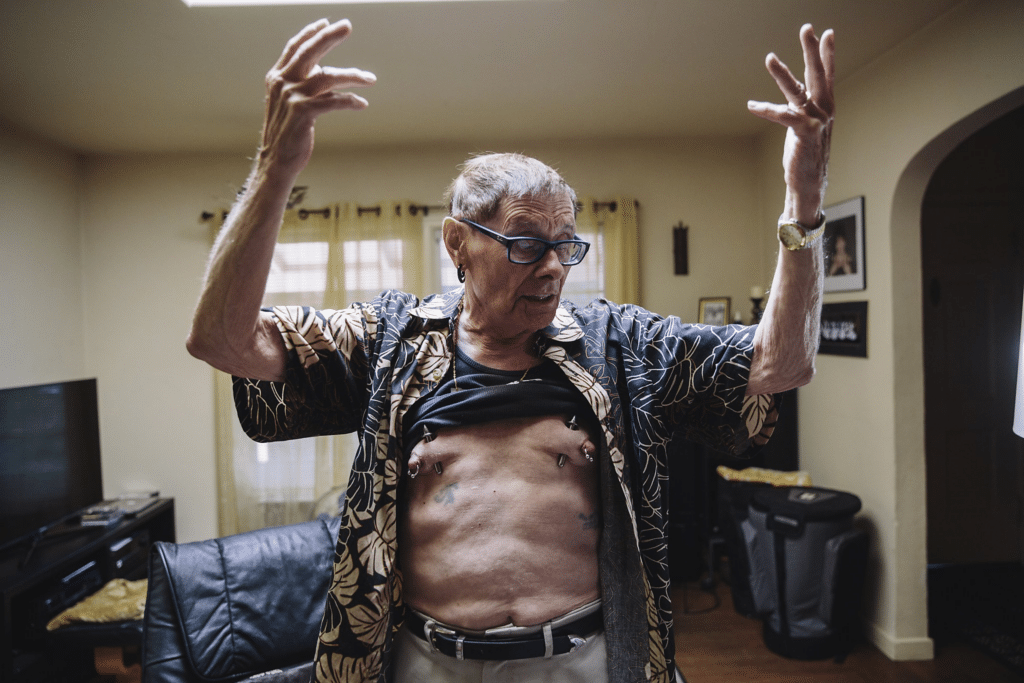
Jim Ward was another body modification pioneer credited with popularising the dydoe piercing. He was the founder of Gauntlet, the first body piercing studio in the United States.
Gauntlet opened in 1977 and quickly became a destination for body modification enthusiasts. At Gauntlet, the dydoe piercing became more widely known, and people started getting this type of piercing.
In the early days, dydoe piercings were done with a thick needle and a curved barbell. Today, thinner needles and straight barbells are commonly used.
READ ALSO: Conch Piercing: Pain, Procedures, Aftercare and More
How much does a dydoe piercing cost?

The cost of a dydoe piercing can vary depending on the piercer and their location. However, most dydoe piercings cost between $50 and $150 (approx. N38,000 to N116,000).
Aside from the cost of the piercing itself, there are additional fees for the jewellery used and the aftercare instructions given by the piercer. Some piercers may require a consultation before performing the piercing, which may incur an additional charge.
Does a dydoe piercing hurt?
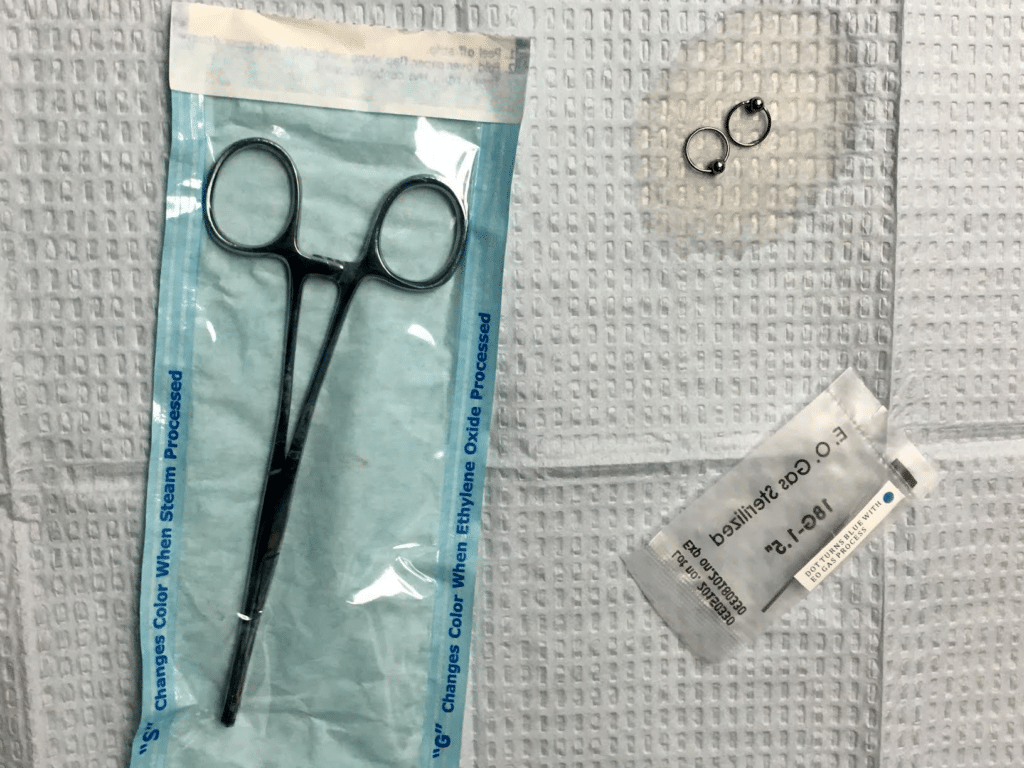
As with any body piercing, there is some degree of pain involved in a dydoe piercing. However, it varies and depends on the individual’s tolerance to pain. Some people may experience intense pain during the piercing process. Others may only feel mild discomfort.
Genital piercings, like the dydoe, tend to be more painful than other types of body piercings. But many people find the pain to be bearable and short-lived. Some say that the piercing itself is less painful than the healing process.
SEE ALSO: Top 30 Stylish Ear Piercing for 2023
What’s the healing time for a dydoe piercing?

Dydoe piercings take a few months to fully heal, with the average healing time being around six to eight weeks. But it depends on factors such as how well the piercing was cared for and whether there are any complications. The first few weeks after getting a dydoe piercing are usually the most painful. During this time, it’s important to keep the piercing clean and avoid any activities that could irritate the area. Like s3x!
READ ALSO: Ashley Piercing: How to Choose the Perfect Jewellery
Pros and cons of Dydoe piercing

There are pros and cons to consider when thinking of getting a dydoe piercing. On the plus side, dydoe piercings can be a great way to express yourself, which can be aesthetically pleasing. They can also add a bit of spice to your s3x life.
On the downside, they can be quite painful to get and heal, and they may cause discomfort during the healing process. And with any piercing, there’s a risk of infection or other complications. And genital piercings carry a higher risk than others.
Here’s a breakdown of the pros and cons.
Pros
1. Unique and stylish
Dydoe piercing is one of the more unique and stylish types of genital piercing available. It is an attention-grabbing piercing that stands out from other types of genital piercings.
2. Enhanced s3xual pleasure
Some people who have undergone a dydoe piercing claim that it enhances s3xual pleasure. The piercing can stimulate sensitive areas, leading to more intense sensations during s3x.
3. Minimal healing time
Dydoe piercing requires a shorter healing time compared to other types of genital piercings. It takes around six weeks to heal and can be fully healed after six months.
4. Limited inconveniences
Once healed, dydoe piercing does not cause significant inconveniences during urination or everyday activities.
Everyday activities like?
We know what’s on your mind!
Cons
1. High risk of complications
Because of the sensitive nature of the genital area, dydoe piercing poses a high risk of complications such as infection, bleeding, and rejection.
2. Painful healing process
The healing process can be uncomfortable and challenging. It can cause swelling, tenderness, and discomfort during s3xual activity.
3. Restricted s3xual activity
During the healing process, s3xual activity must be avoided, leading to a period of limited, you know what!
4. Need for meticulous aftercare
You need proper aftercare to minimise the risk of complications and ensure full healing.
It requires careful consideration and research before making the decision to pierce your penis. It is important to weigh the pros and cons and also to choose a reputable and experienced piercer.
Dydoe piercing jewellery

Dydoe piercing jewellery comes in a variety of materials, including surgical steel, titanium, gold, and acrylic. The most common shapes are curved barbells, captive bead rings, and hoops. Dydoe jewellery typically has a smaller diameter than traditional genital piercings and may require specialised jewellery to avoid discomfort.
It’s important to choose jewellery that is made of high-quality materials, and that is appropriate for the healing process. Many people also choose to have their jewellery custom-made to match their personal style and aesthetic.
Here are the top 10 popular types of jewellery used for dydoe piercings, according to piercers and body jewellery suppliers.
SEE ALSO: Button Nose: A Comprehensive Review
1. Circular Barbell for Dydoe Piercing

This is a curved bar with rounded ends and looks like a horseshoe. Some people commonly use it for dydoe piercings because it fits the shape of the piercing perfectly.
2. Straight Barbell for Dydoe Piercing
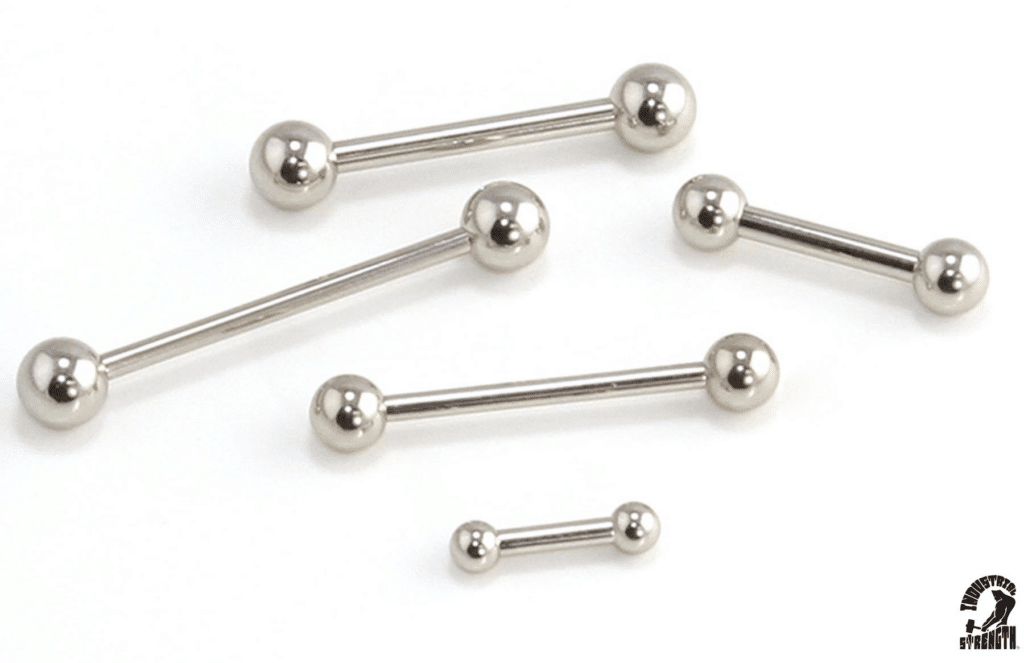
A straight bar with one bead on each end. This type of jewellery is also commonly used for dydoe piercings.
3. Captive Bead Ring for Dydoe Piercing
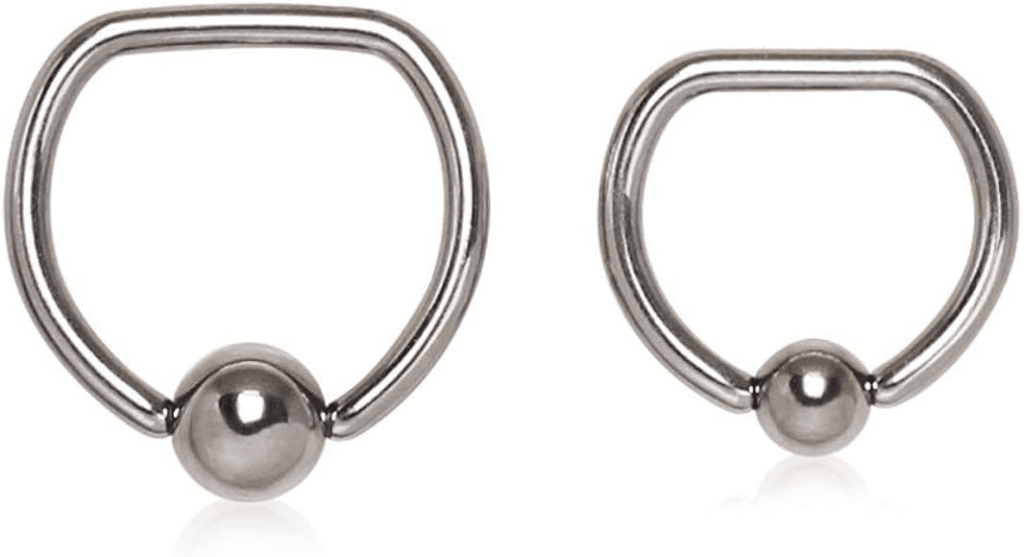
This type of jewellery is created using a round metal ring with one fixed bead made of metal or glass, which is held in place by tension from the ring.
4. Threadless Post for Dydoe Piercing

A straight post with a removable top that is held in place with pressure.
5. Segment Ring for Dydoe Piercing

A ring that is made up of a section and removed and replaced to create a secure closure. This type of ring is available in a variety of sizes and materials.
6. Curved Barbell with Prong-Set Gem for Dydoe Piercing

It’s similar to a curved barbell, but with a gem set in the end.
7. Micro Curved Barbell for Dydoe Piercing

A smaller curved barbell than the standard size, commonly used for more discreet piercing styles.
8. Cluster of Beads for Dydoe Piercing

A cluster of small beads that can be put on a single post, creates a unique look for a dydoe piercing.
9. Threaded Pin for Dydoe Piercing

A straight post with a threaded end that can be screwed onto a compatible piece of jewellery.
10. Labret Stud for Dydoe Piercing

A straight post with a flat backing, designed for lip piercings but can also be used for dydoe piercings.
It’s important to choose high-quality jewellery made of the appropriate materials to avoid infections or potential discomfort while wearing the jewellery. Always seek advice from experienced piercers or professional suppliers before choosing a piece of jewellery for your Dydoe piercing.
READ ALSO: VCH Piercing: All you Need to Know in 2023
FAQs
What is a King Crown Piercing?
A king crown piercing, also known as a crown of thorns piercing, is a type of genital piercing that is similar to a dydoe piercing. But a king crown piercing is located elsewhere.
While a dydoe piercing is done at the head of the penis, a king crown piercing is done on the corona, which is the raised area that goes around the base of the glans. You can do King crown piercings on the top or bottom of the corona or even all the surrounding way. This type of piercing is relatively rare and is very advanced.
The king crown piercing is one of the most painful piercings because of its location. The corona is a very sensitive area with a high concentration of nerve endings. So, a king crown piercing should only be done by an experienced professional piercer.
The healing time takes six months (or more) which makes a king crown piercing’s recuperation longer than other types of genital piercings. Aftercare is very important, and it is essential to follow the instructions given by the piercer to avoid infection and other complications.
How much does Prince Albert cost?
The price of a Prince Albert piercing can vary depending on the location, the piercer, and the type of jewellery used. On average, it can cost anywhere from $50 to $100 (approx. N38,000 to N76,000). Some piercers may charge a separate fee for the jewellery, ranging from $10 to $100 or more.
Before you say it’s chicken feed, know that the cost of a piercing does not include the cost of aftercare products. You can’t ignore this cost because it’s necessary to keep the piercing healthy and free of infection.
How bad does a dydoe hurt?
Like any piercing, a dydoe piercing will cause some degree of pain and discomfort. But the intensity varies from person to person. Some people say that the pain is the same as a regular navel piercing. Others say it’s more severe.
The experience and the piercing technique used by the piercer can also affect the level of pain. It’s better to get the piercing done by a professional piercer who uses sterile equipment. This helps reduce the risk of infection or other complications.
The dydoe piercing is not one of the most painful piercings. Because the pain is short-lived and subsides within a few minutes. However, everyone’s pain tolerance is different.
What is the rarest piercing ever?
While it’s difficult to say for certain what the rarest piercing is, there are a few piercings that are less common than others. The rook piercing, which is located in the antihelix of the ear, is one.
The bridge piercing, which is located between the eyes, is also relatively rare. Others are the vertical tragus piercing, the faux rook, and the eyebrow dermal.
The Guinness World Record for the most unusual body piercing was awarded to Erik Sprague, better known as the Lizardman. He has a number of unconventional piercings, including one that goes through his biceps and exits through his wrist.
He has another that goes through his lips, nose, and tongue. He once said that his piercings are a way of expressing himself and his individuality.
Really?
Well, he has made a name for himself in the body modification community, though not all of his piercings are healthy.
There are a few other people who have earned notoriety for their rare piercings. The Enigma, a performer and sideshow entertainer who has a variety of unusual piercings, is one. He has one that goes through his cheeks, chin, and even his genitals.
Steve Haworth is another notable figure. He’s known for his “alien” implants, which are permanent body modifications that look like metal studs. These implants are extremely rare, and only a handful of people have them.
Conclusion
The dydoe piercing is a relatively rare genital piercing, but it can be a beautiful and unique way to express yourself. While there are some risks and considerations to keep in mind, you may find that the benefits of this piercing outweigh the potential downsides. With the right care and attention, a dydoe piercing can be a positive and empowering experience.
Thanks for reading this guide, but please don’t engage us in overly explicit or s3xually charged conversations in the comment section!



